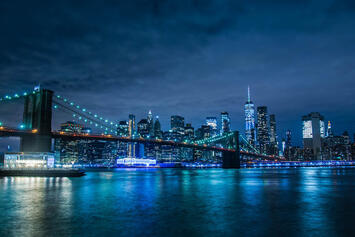
The great core cities don’t die — but only if they are willing to change. Today the world’s great cities, such as New York or London, face dramatically changed conditions, notably the rise of remote work, fears from the pandemic, and rising crime.
In many ways they are experiencing an acceleration of already deep-seated trends. The percentage of Americans living in suburbs rose from 13 percent of the metropolitan population in 1940 to 86 percent in 2017, a gradual increase of 2 percent a year. And since 2012, suburbs and exurbs have accounted for about 90 percent of all metropolitan growth. This dispersion has occurred not only in the United States but in the old cities of Europe, too, including London and Paris.
A New Age for Cities
Increasingly the kind of celebratory coverage of cities as the best places to live, work, create, and even grow old, epitomized by the New York Times’ 2016 “Cities Imagine the Future,” seems increasingly dated. In the last two years, notes demographer Wendell Cox, the largest percentage loss of residents, and generally the worst economic conditions, have prevailed in big core cities such as New York, Chicago, and San Francisco. In contrast, population burgeoned in sprawling areas such as Phoenix, Dallas, and Orlando.
We seem to be at the beginning of a new epoch, much as occurred during the rise of mercantile cities after the Middle Ages and the emergence of industrial cities in the 19th century. Now we are seeing the fading of what Jean Gottman described four decades ago as the “transactional city,” an economy based on finance, high-end business services, and information. In this city, urban grandeur has been defined not by great cathedrals or palaces but soaring office towers. That made sense at the time, but now these ultra-tall buildings are becoming as anachronistic as the old factories that once drove urban economies. For one thing, notes one analyst, firms that once needed a whole floor just to tap their computing power can now perform most of their technical tasks remotely.
Despite nudges from some powerful corporate managements and politicians such as New York governor Kathy Hochul, office-space use remains perilously low and barely improved in the last quarter. Companies such as KPMG are cutting their Manhattan footprint by 40 percent, and a majority of firms recently surveyed by CBRE plan to cut back as well. Real-estate experts such as Wharton’s Joe Gyourko suggest that although the newer high-end building likely will come back, many older ones will remain empty “expensive eyesores.”
But this is nothing new. Office occupancy has been declining since 2000, while construction of new space has fallen consistently for a quarter-century. In 2019, before the pandemic, construction was one-third the rate of 1985 and one-half that of 2000. Now faced with a recession or at least a slowdown, office absorption is likely to remain at historically low rates. Over the balance of the decade the potential loss of value in central-business-district offices could reach $500 billion in New York City alone, while nationwide estimates suggest a financial haircut of $3.3 trillion in commercial mortgages.
Excerpt republished with permission. Read the rest of this piece at National Review.
Joel Kotkin is the author of The Coming of Neo-Feudalism: A Warning to the Global Middle Class. He is the Roger Hobbs Presidential Fellow in Urban Futures at Chapman University and Executive Director for Urban Reform Institute. Learn more at joelkotkin.com and follow him on Twitter @joelkotkin.
Photo: Carlos Oliva via Pexels.












